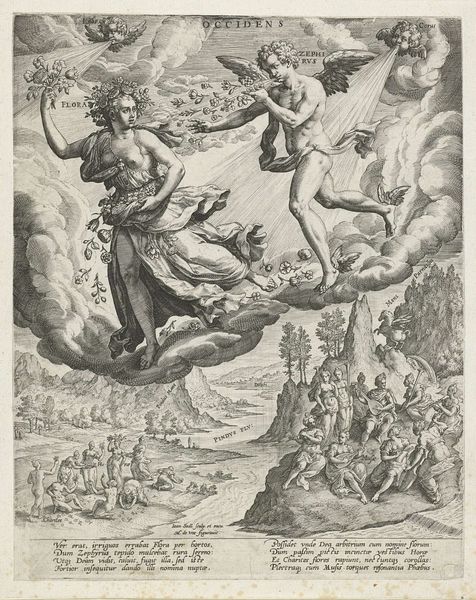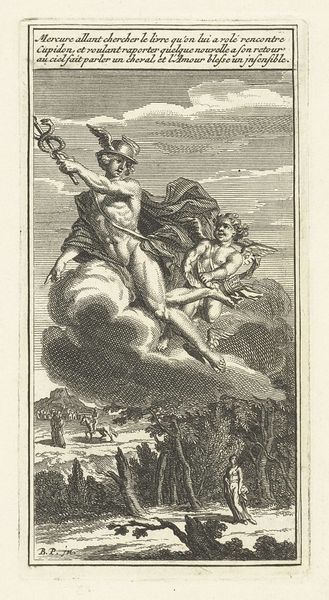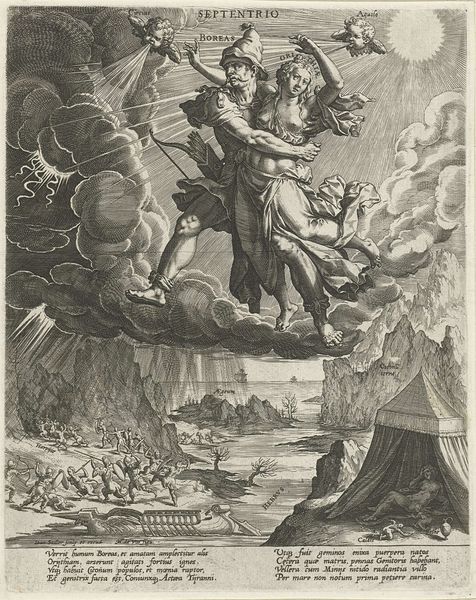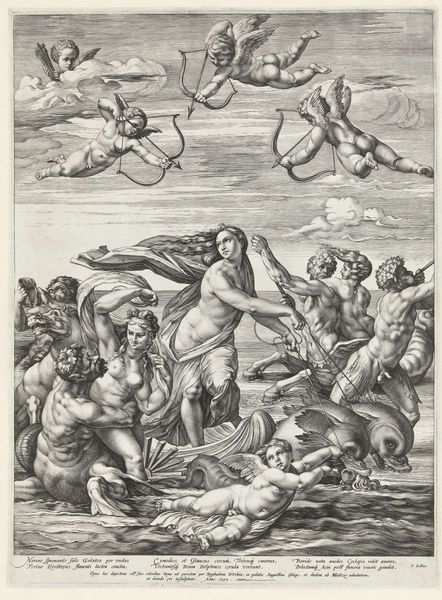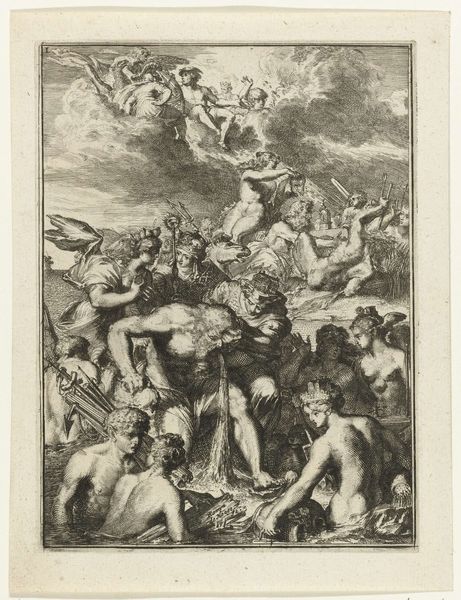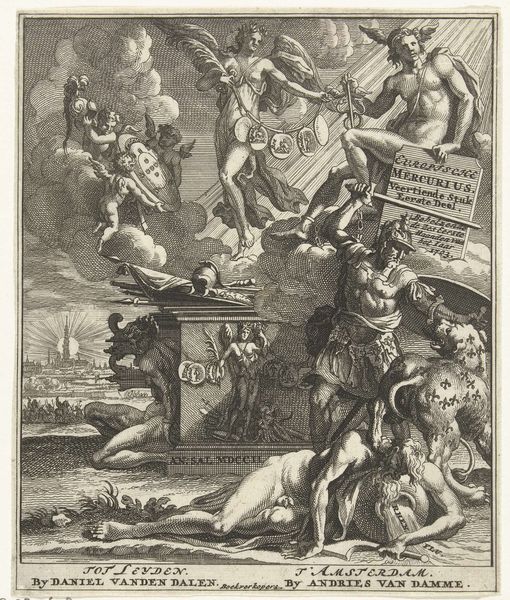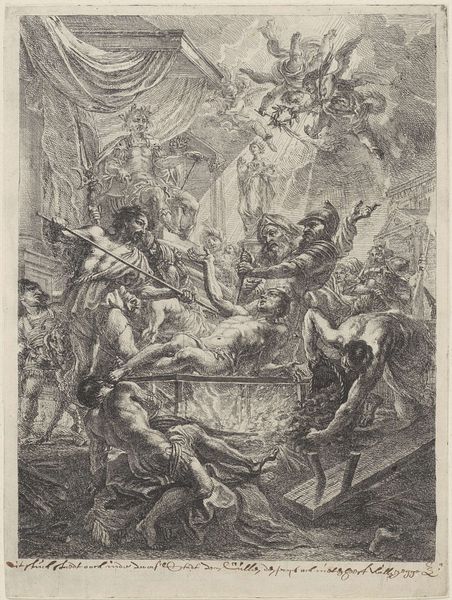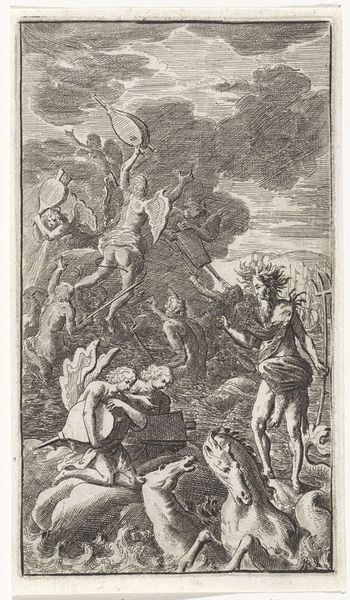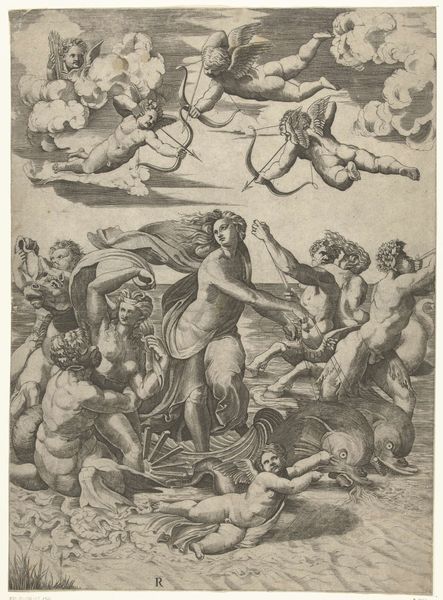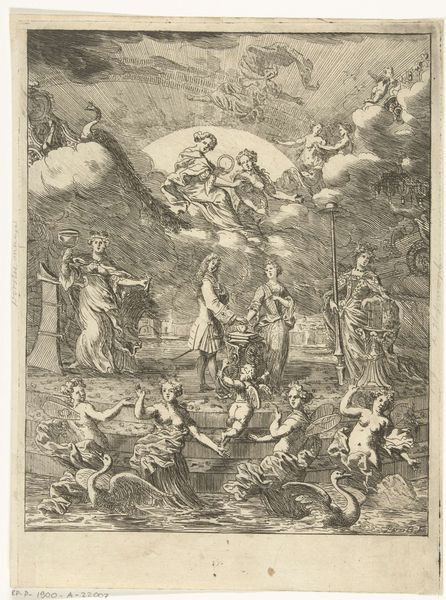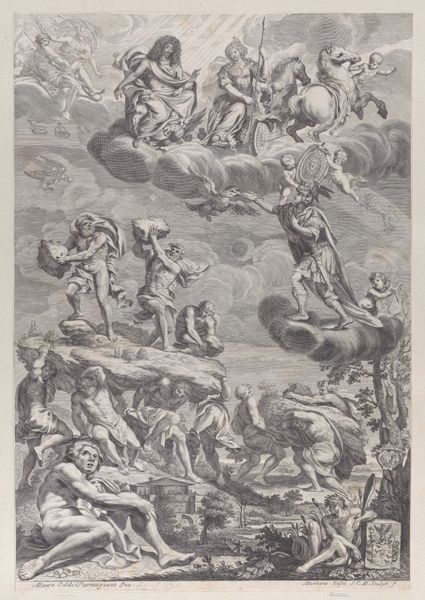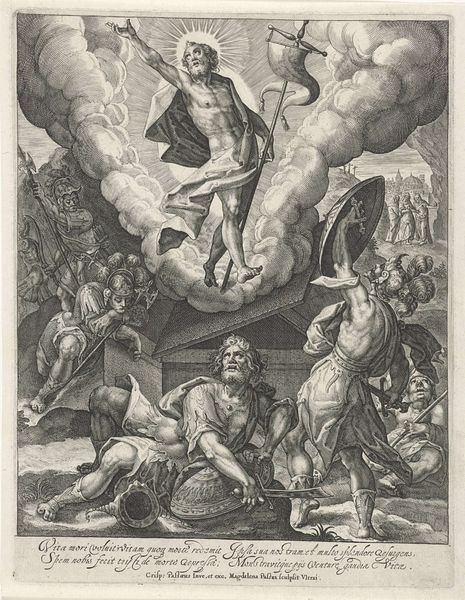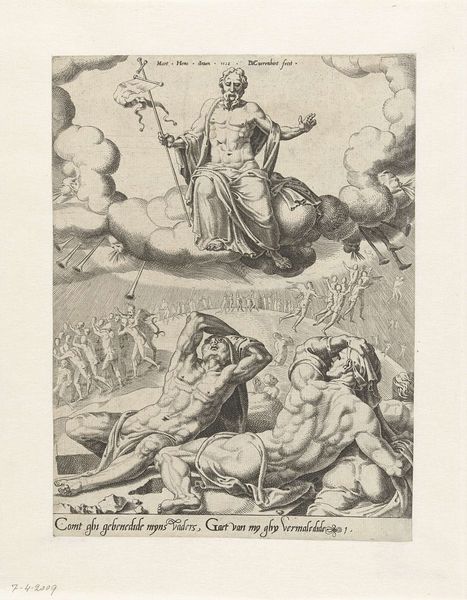
print, paper, ink, engraving
#
allegory
# print
#
landscape
#
classical-realism
#
figuration
#
paper
#
form
#
ink
#
line
#
history-painting
#
northern-renaissance
#
nude
#
engraving
Dimensions: height 246 mm, width 197 mm
Copyright: Rijks Museum: Open Domain
Curator: This engraving, attributed to Johann Sadeler I and dating from the late 16th century, is entitled “Oostenwind”. It’s a beautiful example of Northern Renaissance printmaking. Editor: My initial reaction is one of visual overload! The contrast between the delicate lines of the figures and the more roughly sketched landscape creates a bit of tension, but ultimately feels unified. There is a strong sense of allegorical representation—what narratives might be at play here? Curator: The medium is paper, of course, but what I find fascinating is the technique. Notice the fineness of the lines—all meticulously etched into a metal plate, then inked and pressed onto the paper. We can also discuss the circulation of labor through different European workshops in Northern Renaissance engraving. Editor: Indeed, it appears to depict personifications of wind. See Aurora, goddess of dawn, with what looks like Zephyrus, god of the west wind; his garland overflowing with what looks to be olive branches. Underneath, we have numerous classical-looking tents populated by human figures, giving the work a strong historical narrative with allegorical overtones. I am very intrigued to analyze how women were depicted in relationship to allegorical concepts. Curator: Absolutely, consider the physical labor required to produce this piece! This would have involved a workshop and apprenticeship systems with specialists managing engraving, printing, and distribution. These detailed works facilitated the spread of ideas but also relied on systems of making. This emphasis on the skilled labour should be emphasized in discussions about the Renaissance—these prints demonstrate craft! Editor: You know, framing it within systems of labor, that is a different perspective. As it is a "history painting," the engraving alludes to classical myth. Let's examine whose history, or mythology, is deemed worthy of representation. Look closer: what power structures are inscribed in the artistic choices surrounding gender, the nude, and the depiction of a specific narrative moment? Are we truly seeing just a classical wind? Curator: Fascinating! It strikes me that this collaboration is fruitful as it invites conversations beyond aesthetics—the work also illustrates the power of human endeavor! It moves beyond simple observation into critical dialogues relevant to labor practices of workshops of Northern Europe at that time. Editor: Yes, this piece pushes beyond mere skill; rather, it’s an insightful historical object loaded with gendered cultural meaning! I think this allows us to encourage conversations concerning representation beyond simplistic mythological narratives and open it into social political discussions!
Comments
No comments
Be the first to comment and join the conversation on the ultimate creative platform.
